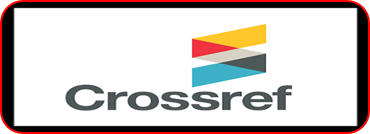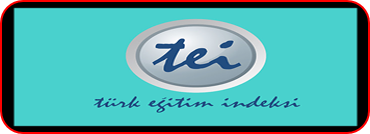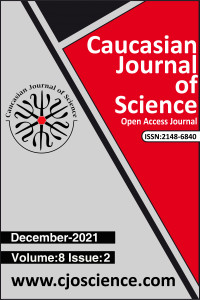Kobalt(II) 4-Floro- ve 4-Bromobenzoat Nikotinamid Komplekslerinin Hirshfeld Yüzey Analizi, Etkileşim Enerjisi Hesaplamaları ve Koronavirüs Spike Proteini ile Etkileşimlerinin Moleküler Docking Çalışmaları ile İncelenmesi
Öz
Bu çalışmada kristal yapıları önceki çalışmalarda belirlenmiş olan diaquabis(4-florobenzoat)bis(nikotinamid) kobalt (II) ve diaquabis(4-bromobenzoat)bis(nikotinamid) kobalt (II) komplekslerinin moleküller arası etkileşimleri Hirshfeld Yüzey Analizi ile belirlenmiştir. Moleküllerarası etkileşim katkı yüzdeleri iki boyutlu parmak izi grafiklerinden elde edilmiştir. Komplekslerin etkileşim enerjileri CrystalExplorer programı yardımıyla B3LYP/6-31G ve HF/3-21G temel setleri kullanarak belirlenmiştir. Komplekslerin elektrostatik potansiyel haritaları CrystalExplorer programı ile HF/STO-3G temel seti kullanarak oluşturulmuştur. Çalışmada ayrıca komplekslerin Koronavirüs Spike Proteini ve Spike protein ile ACE2 katalitik bağlanma bölgesindeki etkileşimleri Moleküler Docking yardımı ile incelenmiştir. Komplekslerin ADMET (adsorpsiyon, dağılım, metabolizma, atılım ve toksisite) özelliklerine ilişkin tahminler SwissADME ve ProTox-II çevrimiçi veritabanları kullanılarak yapılmıştır. Hirshfeld yüzey analizi sonuçlarına göre komplekslerin Hirshfeld yüzeyinde H…H, H...C/C…H, H…O/O…H, F…H/H…F, H…Br/Br…H, C…C, C…O/O…C, C…N/N…C, F…O/O…F, N…F/F…N, H…N/N…H, C…Br/Br…C, O…Br/Br…O, N…Br/Br…N, Br…Br ve N…N gibi moleküller arası etkileşimler tespit edilmiştir. Kompleks 1 ve 2’nin toplam enerjilerine en büyük katkıyı elektrostatik ve dispersiyon enerjilerinin sağladığı belirlenmiştir. Komplekslerin SARS-CoV-2’nin Spike proteini ve Spike protein ile ACE2 bağlanma bölgesine karşı substrat etkileri in siliko olarak incelendiğinde, hidrojen bağı, karbon-hidrojen bağı, π-π istiflenmesi, π-π T-şekilli etkileşimleri, elektrostatik etkileşimler, halojen, π-katyon, π-alkil, amid-π etkileşimleri ve alkil gibi birçok etkileşim vasıtasıyla proteinlere karşı antagonist etki sergileyebileceği tespit edilmiştir.
Anahtar Kelimeler
Kovalent olmayan etkileşimler Hirshfeld yüzey analizi Moleküler Docking Sars-CoV-2 karboksilat kompleksleri
Destekleyen Kurum
-
Proje Numarası
-
Teşekkür
-
Kaynakça
- Banerjee, P., Eckert, A. O., Schrey, A. K., & Preissner, R. (2018). ProTox-II: A webserver for the prediction of toxicity of chemicals. Nucleic Acids Research, 46(Web Server issue), W257–W263. https://doi.org/10.1093/nar/gky318
- BIOVIA, Dassault Systèmes, BIOVA Discovery Studio Visualizer 2021, v21.1.0.20298, San Diego: Dassault Systèmes, 2021.
- Brodeur, A., Gray, D., Islam, A., & Bhuiyan, S. (2021). A literature review of the economics of COVID‐19. Journal of Economic Surveys, 35(4), 1007–1044. https://doi.org/10.1111/joes.12423
- Çaylak, N., Hökelek, T., & Necefoğlu, H. (2007). Diaquabis(4-fluorobenzoato-κ O )bis(nicotinamide-κ N 1 )cobalt(II). Acta Crystallographica Section E Structure Reports Online, 63(5), m1341–m1343. https://doi.org/10.1107/S1600536807016534
- Černý, J., & Hobza, P. (2007). Non-covalent interactions in biomacromolecules. Physical Chemistry Chemical Physics, 9(39), 5291. https://doi.org/10.1039/b704781a
- Cheke, R. S. (2020). The Molecular Docking Study of Potential Drug Candidates Showing Anti-COVID-19 Activity by Exploring of Therapeutic Targets of SARS-CoV-2. Eurasian Journal of Medicine and Oncology. https://doi.org/10.14744/ejmo.2020.31503
- Daina, A., Michielin, O., & Zoete, V. (2017). SwissADME: A free web tool to evaluate pharmacokinetics, drug-likeness and medicinal chemistry friendliness of small molecules. Scientific Reports, 7(1), 42717. https://doi.org/10.1038/srep42717
- Demir Tekol, S. (2020). SARS-CoV-2: Virology and Microbiological Diagnostic Tools. Southern Clinics of Istanbul Eurasia, 31, 8–12. https://doi.org/10.14744/scie.2020.13549
- Esakandari, H., Nabi-Afjadi, M., Fakkari-Afjadi, J., Farahmandian, N., Miresmaeili, S.-M., & Bahreini, E. (2020). A comprehensive review of COVID-19 characteristics. Biological Procedures Online, 22(1), 19. https://doi.org/10.1186/s12575-020-00128-2
- Fakhar, Z., Khan, S., AlOmar, S. Y., Alkhuriji, A., & Ahmad, A. (2021). ABBV-744 as a potential inhibitor of SARS-CoV-2 main protease enzyme against COVID-19. Scientific Reports, 11(1), 234. https://doi.org/10.1038/s41598-020-79918-3
- Frieden, E. (1975). Non-covalent interactions: Key to biological flexibility and specificity. Journal of Chemical Education, 52(12), 754. https://doi.org/10.1021/ed052p754
- Hirshfeld, F. L. (1977). Bonded-atom fragments for describing molecular charge densities. Theoretica Chimica Acta, 44(2), 129–138. https://doi.org/10.1007/BF00549096
- Hökelek, T., Çaylak, N., & Necefoğlu, H. (2007). Diaquabis(4-bromobenzoato-κ O )bis(nicotinamide-κ N 1 )cobalt(II). Acta Crystallographica Section E Structure Reports Online, 63(7), m1873–m1874. https://doi.org/10.1107/S1600536807028358
- Jain, S., Potschka, H., Chandra, P. P., Tripathi, M., & Vohora, D. (2021). Management of COVID-19 in patients with seizures: Mechanisms of action of potential COVID-19 drug treatments and consideration for potential drug-drug interactions with anti-seizure medications. Epilepsy Research, 174, 106675. https://doi.org/10.1016/j.eplepsyres.2021.106675
- Johnson, E. R., Keinan, S., Mori-Sánchez, P., Contreras-García, J., Cohen, A. J., & Yang, W. (2010). Revealing Noncovalent Interactions. Journal of the American Chemical Society, 132(18), 6498–6506. https://doi.org/10.1021/ja100936w
- Lan, J., Ge, J., Yu, J., Shan, S., Zhou, H., Fan, S., Zhang, Q., Shi, X., Wang, Q., Zhang, L., & Wang, X. (2020). Structure of the SARS-CoV-2 spike receptor-binding domain bound to the ACE2 receptor. Nature, 581(7807), 215–220. https://doi.org/10.1038/s41586-020-2180-5
- Lipinski, C. A., Lombardo, F., Dominy, B. W., & Feeney, P. J. (1997). Experimental and computational approaches to estimate solubility and permeability in drug discovery and development settings. Advanced Drug Delivery Reviews, 23(1), 3–25. https://doi.org/10.1016/S0169-409X(96)00423-1
- Mackenzie, C. F., Spackman, P. R., Jayatilaka, D., & Spackman, M. A. (2017). CrystalExplorer model energies and energy frameworks: Extension to metal coordination compounds, organic salts, solvates and open-shell systems. IUCrJ, 4(5), 575–587. https://doi.org/10.1107/S205225251700848X
- Maloney, A. G. P., Wood, P. A., & Parsons, S. (2015). Intermolecular interaction energies in transition metal coordination compounds. CrystEngComm, 17(48), 9300–9310. https://doi.org/10.1039/C5CE01522G
- McKinnon, J. J., Jayatilaka, D., & Spackman, M. A. (2007). Towards quantitative analysis of intermolecular interactions with Hirshfeld surfaces. Chemical Communications, 37, 3814–3816. https://doi.org/10.1039/b704980c
- Rothan, H. A., & Byrareddy, S. N. (2020). The epidemiology and pathogenesis of coronavirus disease (COVID-19) outbreak. Journal of Autoimmunity, 109, 102433. https://doi.org/10.1016/j.jaut.2020.102433
- Singh, S., & Florez, H. (2020). Coronavirus disease 2019 drug discovery through molecular docking. F1000Research, 9, 502. https://doi.org/10.12688/f1000research.24218.1
- Spackman, M. A., & Jayatilaka, D. (2009a). Hirshfeld surface analysis. CrystEngComm, 11(1), 19–32. https://doi.org/10.1039/B818330A
- Spackman, M. A., & Jayatilaka, D. (2009b). Hirshfeld surface analysis. CrystEngComm, 11(1), 19–32. https://doi.org/10.1039/B818330A
- Spackman, M. A., McKinnon, J. J., & Jayatilaka, D. (2008). Electrostatic potentials mapped on Hirshfeld surfaces provide direct insight into intermolecular interactions in crystals. CrystEngComm, 10.1039.b715227b. https://doi.org/10.1039/b715227b
- Spackman, P. R., Turner, M. J., McKinnon, J. J., Wolff, S. K., Grimwood, D. J., Jayatilaka, D., & Spackman, M. A. (2021). CrystalExplorer: A program for Hirshfeld surface analysis, visualization and quantitative analysis of molecular crystals. Journal of Applied Crystallography, 54(3), 1006–1011. https://doi.org/10.1107/S1600576721002910
- Trott, O., & Olson, A. J. (2009). AutoDock Vina: Improving the speed and accuracy of docking with a new scoring function, efficient optimization, and multithreading. Journal of Computational Chemistry, NA-NA. https://doi.org/10.1002/jcc.21334
- Verma, T., Sinha, M., Nitin, B., Yadav, S., Shah, K., & Chauhan, N. (2021). A review on Coronavirus Disease and potentially active drugs targeting Coronavirus. Biomedical and Biotechnology Research Journal (BBRJ), 5(2), 110. https://doi.org/10.4103/bbrj.bbrj_14_21
- Wan, Y., Shang, J., Graham, R., Baric, R. S., & Li, F. (2020). Receptor Recognition by the Novel Coronavirus from Wuhan: An Analysis Based on Decade-Long Structural Studies of SARS Coronavirus. Journal of Virology, 94(7). https://doi.org/10.1128/JVI.00127-20
Hirshfeld Surface Analysis, Interaction Energies Calculations and Investigation of Interactions with Coronavirus Spike Protein by Molecular Docking Studies of Cobalt(II) 4-Fluoro- ve 4-Bromobenzoate Nicotinamide Complexes
Öz
In this study, the intermolecular interactions of diaquabis(4 -fluorobenzoate)bis(nicotinamide) cobalt (II) and diaquabis(4 bromobenzoate)bis(nicotinamide) cobalt (II) complexes, whose crystal structures were previously determined, were determined by Hirshfeld Surface Analysis. Intermolecular interaction contribution percentages were obtained from two-dimensional fingerprint plots. The interaction energies of the complexes were determined using the B3LYP/6-31G and HF/3-21G basis sets with the help of CrystalExplorer program. Electrostatic potential maps of the complexes were created with the CrystalExplorer program using the HF/STO-3G base set. In addition, the interactions of the complexes with the Coronavirus Spike Protein and Spike protein-ACE2 catalytic binding site were investigated with the help of Molecular Docking. Predictions of the complexes' ADMET (adsorption, distribution, metabolism, excretion and toxicity) properties were made using SwissADME and ProTox-II online databases. According to the results of Hirshfeld surface analysis, There are intermolecular interactions such as H…H, H...C/C…H, H…O/O…H, F…H/H…F, H…Br/Br…H, C…C, C…O/O…C, C…N/N…C, F…O/O…F, N…F/F…N, H…N/N…H, C…Br/Br…C, O… Br/Br…O, N…Br/Br…N, Br…Br and N…N on the Hirshfeld surface of the complexes. It was determined that electrostatic and dispersion energies provided the greatest contribution to the total energies of Complexes 1 and 2. When the substrate effects of the complexes against the Spike protein of SARS-CoV-2 and the Spike protein and the ACE2 binding site were examined in silico, it was determined that they could exhibit antagonist effects against proteins through many interactions such as hydrogen bonding, carbon hydrogen bonding, π-π stacking, π-π T-shaped interactions, electrostatic interactions, halogen, π-cation, π-alkyl, amide-π interactions, and alkyl.
Anahtar Kelimeler
Non-covalent interactions Hirshfeld surface analysis Molecular Docking Sars-CoV-2 carboxylate complexes
Proje Numarası
-
Kaynakça
- Banerjee, P., Eckert, A. O., Schrey, A. K., & Preissner, R. (2018). ProTox-II: A webserver for the prediction of toxicity of chemicals. Nucleic Acids Research, 46(Web Server issue), W257–W263. https://doi.org/10.1093/nar/gky318
- BIOVIA, Dassault Systèmes, BIOVA Discovery Studio Visualizer 2021, v21.1.0.20298, San Diego: Dassault Systèmes, 2021.
- Brodeur, A., Gray, D., Islam, A., & Bhuiyan, S. (2021). A literature review of the economics of COVID‐19. Journal of Economic Surveys, 35(4), 1007–1044. https://doi.org/10.1111/joes.12423
- Çaylak, N., Hökelek, T., & Necefoğlu, H. (2007). Diaquabis(4-fluorobenzoato-κ O )bis(nicotinamide-κ N 1 )cobalt(II). Acta Crystallographica Section E Structure Reports Online, 63(5), m1341–m1343. https://doi.org/10.1107/S1600536807016534
- Černý, J., & Hobza, P. (2007). Non-covalent interactions in biomacromolecules. Physical Chemistry Chemical Physics, 9(39), 5291. https://doi.org/10.1039/b704781a
- Cheke, R. S. (2020). The Molecular Docking Study of Potential Drug Candidates Showing Anti-COVID-19 Activity by Exploring of Therapeutic Targets of SARS-CoV-2. Eurasian Journal of Medicine and Oncology. https://doi.org/10.14744/ejmo.2020.31503
- Daina, A., Michielin, O., & Zoete, V. (2017). SwissADME: A free web tool to evaluate pharmacokinetics, drug-likeness and medicinal chemistry friendliness of small molecules. Scientific Reports, 7(1), 42717. https://doi.org/10.1038/srep42717
- Demir Tekol, S. (2020). SARS-CoV-2: Virology and Microbiological Diagnostic Tools. Southern Clinics of Istanbul Eurasia, 31, 8–12. https://doi.org/10.14744/scie.2020.13549
- Esakandari, H., Nabi-Afjadi, M., Fakkari-Afjadi, J., Farahmandian, N., Miresmaeili, S.-M., & Bahreini, E. (2020). A comprehensive review of COVID-19 characteristics. Biological Procedures Online, 22(1), 19. https://doi.org/10.1186/s12575-020-00128-2
- Fakhar, Z., Khan, S., AlOmar, S. Y., Alkhuriji, A., & Ahmad, A. (2021). ABBV-744 as a potential inhibitor of SARS-CoV-2 main protease enzyme against COVID-19. Scientific Reports, 11(1), 234. https://doi.org/10.1038/s41598-020-79918-3
- Frieden, E. (1975). Non-covalent interactions: Key to biological flexibility and specificity. Journal of Chemical Education, 52(12), 754. https://doi.org/10.1021/ed052p754
- Hirshfeld, F. L. (1977). Bonded-atom fragments for describing molecular charge densities. Theoretica Chimica Acta, 44(2), 129–138. https://doi.org/10.1007/BF00549096
- Hökelek, T., Çaylak, N., & Necefoğlu, H. (2007). Diaquabis(4-bromobenzoato-κ O )bis(nicotinamide-κ N 1 )cobalt(II). Acta Crystallographica Section E Structure Reports Online, 63(7), m1873–m1874. https://doi.org/10.1107/S1600536807028358
- Jain, S., Potschka, H., Chandra, P. P., Tripathi, M., & Vohora, D. (2021). Management of COVID-19 in patients with seizures: Mechanisms of action of potential COVID-19 drug treatments and consideration for potential drug-drug interactions with anti-seizure medications. Epilepsy Research, 174, 106675. https://doi.org/10.1016/j.eplepsyres.2021.106675
- Johnson, E. R., Keinan, S., Mori-Sánchez, P., Contreras-García, J., Cohen, A. J., & Yang, W. (2010). Revealing Noncovalent Interactions. Journal of the American Chemical Society, 132(18), 6498–6506. https://doi.org/10.1021/ja100936w
- Lan, J., Ge, J., Yu, J., Shan, S., Zhou, H., Fan, S., Zhang, Q., Shi, X., Wang, Q., Zhang, L., & Wang, X. (2020). Structure of the SARS-CoV-2 spike receptor-binding domain bound to the ACE2 receptor. Nature, 581(7807), 215–220. https://doi.org/10.1038/s41586-020-2180-5
- Lipinski, C. A., Lombardo, F., Dominy, B. W., & Feeney, P. J. (1997). Experimental and computational approaches to estimate solubility and permeability in drug discovery and development settings. Advanced Drug Delivery Reviews, 23(1), 3–25. https://doi.org/10.1016/S0169-409X(96)00423-1
- Mackenzie, C. F., Spackman, P. R., Jayatilaka, D., & Spackman, M. A. (2017). CrystalExplorer model energies and energy frameworks: Extension to metal coordination compounds, organic salts, solvates and open-shell systems. IUCrJ, 4(5), 575–587. https://doi.org/10.1107/S205225251700848X
- Maloney, A. G. P., Wood, P. A., & Parsons, S. (2015). Intermolecular interaction energies in transition metal coordination compounds. CrystEngComm, 17(48), 9300–9310. https://doi.org/10.1039/C5CE01522G
- McKinnon, J. J., Jayatilaka, D., & Spackman, M. A. (2007). Towards quantitative analysis of intermolecular interactions with Hirshfeld surfaces. Chemical Communications, 37, 3814–3816. https://doi.org/10.1039/b704980c
- Rothan, H. A., & Byrareddy, S. N. (2020). The epidemiology and pathogenesis of coronavirus disease (COVID-19) outbreak. Journal of Autoimmunity, 109, 102433. https://doi.org/10.1016/j.jaut.2020.102433
- Singh, S., & Florez, H. (2020). Coronavirus disease 2019 drug discovery through molecular docking. F1000Research, 9, 502. https://doi.org/10.12688/f1000research.24218.1
- Spackman, M. A., & Jayatilaka, D. (2009a). Hirshfeld surface analysis. CrystEngComm, 11(1), 19–32. https://doi.org/10.1039/B818330A
- Spackman, M. A., & Jayatilaka, D. (2009b). Hirshfeld surface analysis. CrystEngComm, 11(1), 19–32. https://doi.org/10.1039/B818330A
- Spackman, M. A., McKinnon, J. J., & Jayatilaka, D. (2008). Electrostatic potentials mapped on Hirshfeld surfaces provide direct insight into intermolecular interactions in crystals. CrystEngComm, 10.1039.b715227b. https://doi.org/10.1039/b715227b
- Spackman, P. R., Turner, M. J., McKinnon, J. J., Wolff, S. K., Grimwood, D. J., Jayatilaka, D., & Spackman, M. A. (2021). CrystalExplorer: A program for Hirshfeld surface analysis, visualization and quantitative analysis of molecular crystals. Journal of Applied Crystallography, 54(3), 1006–1011. https://doi.org/10.1107/S1600576721002910
- Trott, O., & Olson, A. J. (2009). AutoDock Vina: Improving the speed and accuracy of docking with a new scoring function, efficient optimization, and multithreading. Journal of Computational Chemistry, NA-NA. https://doi.org/10.1002/jcc.21334
- Verma, T., Sinha, M., Nitin, B., Yadav, S., Shah, K., & Chauhan, N. (2021). A review on Coronavirus Disease and potentially active drugs targeting Coronavirus. Biomedical and Biotechnology Research Journal (BBRJ), 5(2), 110. https://doi.org/10.4103/bbrj.bbrj_14_21
- Wan, Y., Shang, J., Graham, R., Baric, R. S., & Li, F. (2020). Receptor Recognition by the Novel Coronavirus from Wuhan: An Analysis Based on Decade-Long Structural Studies of SARS Coronavirus. Journal of Virology, 94(7). https://doi.org/10.1128/JVI.00127-20
Ayrıntılar
| Birincil Dil | Türkçe |
|---|---|
| Konular | Çevre Bilimleri |
| Bölüm | Caucasian Journal of Science |
| Yazarlar | |
| Proje Numarası | - |
| Yayımlanma Tarihi | 31 Aralık 2021 |
| Gönderilme Tarihi | 8 Kasım 2021 |
| Kabul Tarihi | 16 Aralık 2021 |
| Yayımlandığı Sayı | Yıl 2021 Cilt: 8 Sayı: 2 |
Kaynak Göster








